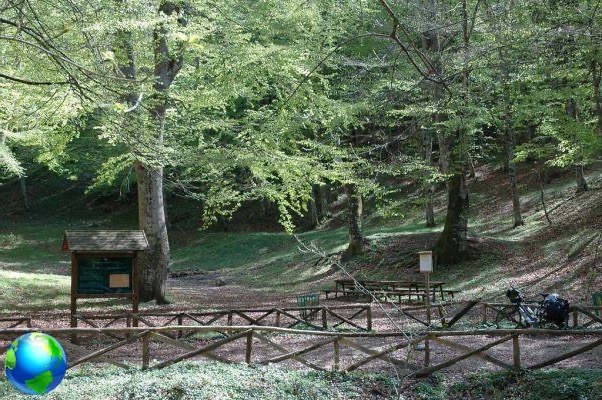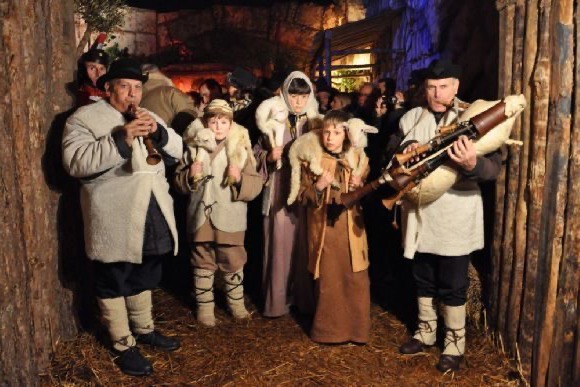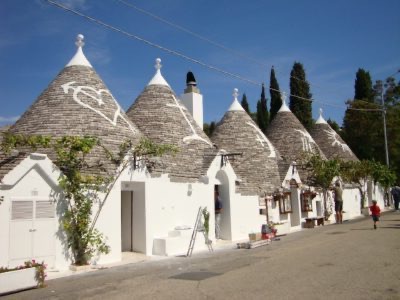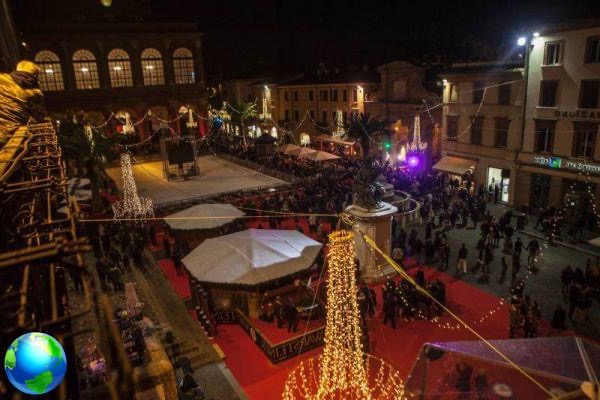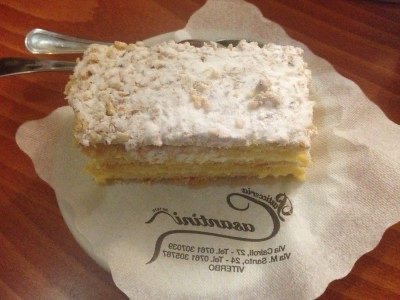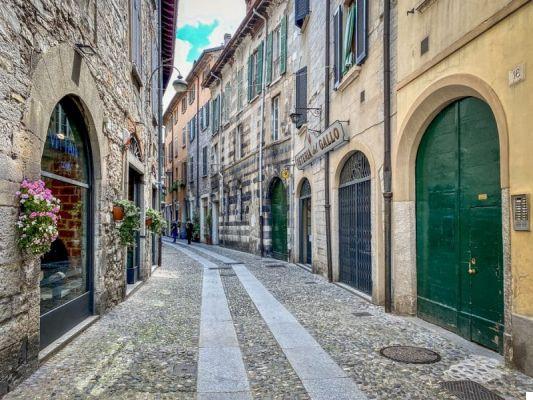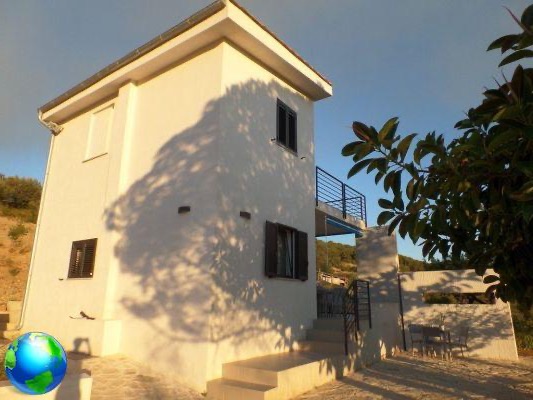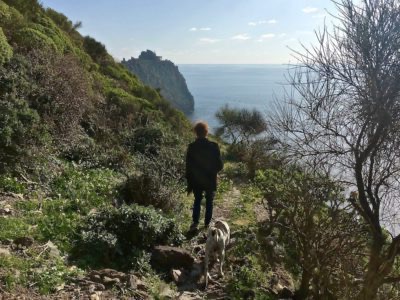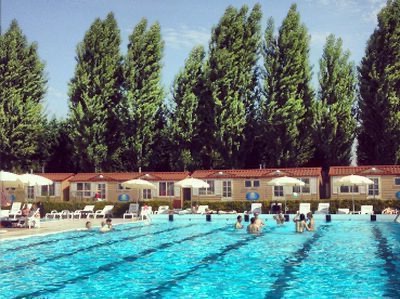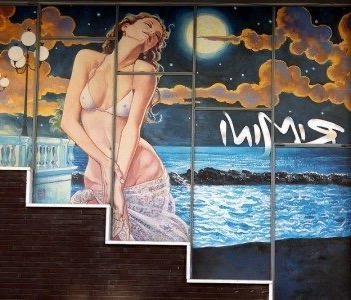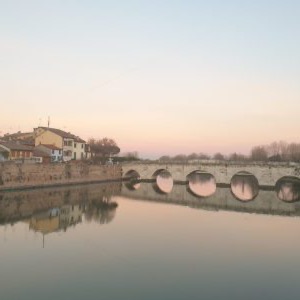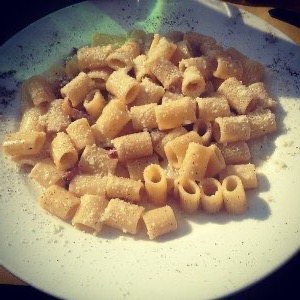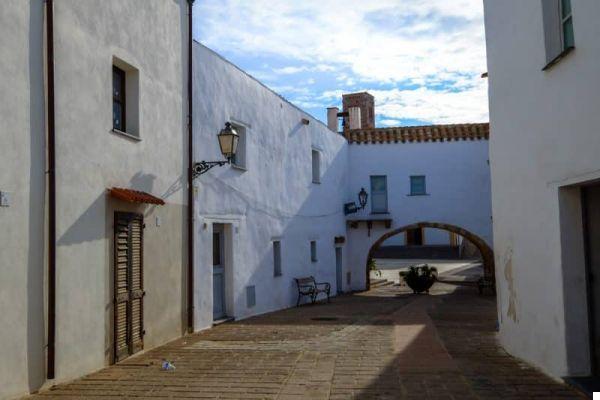Amo Naples, but you know this by now, and I always find the time to go there at least once a year (often even two) in spring or winter, my favorite seasons to explore it. Naples is a truly incredible city and every time I discover a new reason to renew my love for it, gods places I did not know, little traveled by weekend tourists. I have listed 10 here, but I'm sure I will continue to update this article over the years with the discoveries I make.
Unusual Naples: 10 places you probably don't know
1. Street art by Jorit & others
For several years Naples has distinguished itself nationally and internationally for its murals and for street art, which can be found everywhere, from the center to the suburbs. Many artists love this city and wanted to leave a mark of their passage on its walls. Starting from the historic center, one of the murals most famous is certainly that of Jorit Agoch at the beginning of Forcella called "Gennaro”, In honor of the patron saint of the city (the mural is located here). Not far from there, in Piazza dei Gerolomini 106 there is the Bansky's murals "The Madonna with the Gun", one of Banksy's 2 murals in Italy (the other is in Venice).
Moving towards the Quartieri Spagnoli (district full of small murals everywhere), the most famous is undoubtedly the murals of Maradona made for Napoli's second Scudetto, in 1990 (found here). Other magnificent murals can be found in the Rione Sanità: the murals by Francisco Bosoletti entitled "RESIS-TI-AMO", in front of the “Luce” murals by Tono Cruz, and the murals of the man in chains by Zilda inside Palazzo Sanfelice. Moving out of the center, it is worth seeing the murals by Blu on the wall of the ex-OPG Je so 'Pazzo (A former Psychiatric Hospital, now Social Center) in Materdei district and the beautiful murals of Jorit in the industrial district of San Giovanni, all in via Taverna del Ferro (the huge one dedicated to Maradona, that of the urchin Niccolò, and, opposite, i murals dedicated to Che Guevara). Always Jorit has completed a huge mural dedicated to Pier Paolo Pasolini a Scampia. We close with i murals of the Merola Park in Ponticelli (called its own park of murals) and the various murals depicting Massimo Troisi a San Giorgio a Cremano, his hometown.
2.Rione Sanità
The Rione Sanità, located south of Capodimonte, is probably the neighborhood that most reflects the soul of the city and its inhabitants. It is a difficult neighborhood to categorize, where you will find incredible Baroque palaces, popular markets and ancient catacombs, and it is here that the great Totò was born (in via Santa Maria Antesaecula al 109). Among the baroque palaces not to be missed there are certainly the Palazzo dello Spagnuolo and Palazzo Sanfelice. The staircase that adorns the Palazzo dello Spagnuolo is truly a masterpiece, a double ramp that at the time was also used by horses to bring the riders to the top. It was designed by Sanfelice in 1738 and has also become the setting for several films by De Sica but also for the “Gomorra” series. Also by the same architect (and no less beautiful), there is the staircase of the building that takes his name. These buildings are not open to the public, but the doors are often open and you can sneak in to see them. To not miss anything in this neighborhood you can participate in a 2h free-tour of the Rione Sanità (to book at this link) which also includes the cemetery of the Fontanelle (see paragraph below).
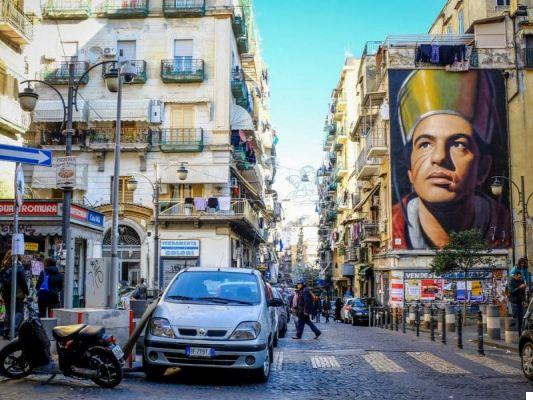
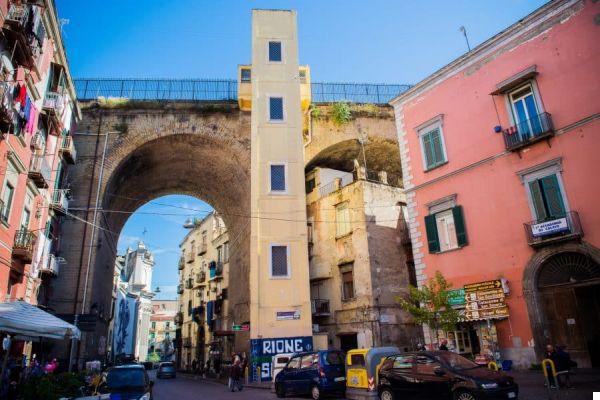
3. Fontanelle Cemetery
Il cemetery of the Fontanelle it is a fascinating place to say the least, and considering that it is a burial place it could have a certain effect. I must admit that I have seen very few places so full of spirituality around the world. This cemetery is located in a large cave (indeed, several caves connected to each other) where the remains of about 8000 people were preserved victims of the plague of 1656 and then of as many during the cholera epidemic of 1837. About fifty years later, at the end of the 800th century, the cave became a place of worship for the adoration of the dead; the adepts "adopted" a skull and prayed for the soul of the deceased (the cult called "pezzentelle souls"). The skulls were placed in display cases and the followers brought (and still carry!) Ex-votos. In 1969 the cemetery was closed, but in recent years it has been reopened and it is not difficult to see people praying in front of the skulls. It is a place full of incredible legends and the guides will thrill you with their stories. You can also visit it alone, but with the guides you will have a completely different kind of experience. The visits are organized by the social cooperative "La Paranza" and you can book them at this link. The Fontanelle cemetery is also included in the free-tour of the Rione Sanità.
4. Bourbon Gallery
From an unusual place in Naples like the Fontanelle cemetery, let's now move on to another crazy place: the Bourbon Gallery. Everyone (or almost everyone) knows Underground Naples, but very few know of the existence of this incredible architectural and engineering work that dates back to the mid-800th century. Ordered by Ferdinand II of Bourbon in 1853, this gallery it had to connect the Royal Palace with Piazza Vittoria, near the sea and the barracks. It was supposed to be a quick military route and an escape route for the monarchs. These tunnels had to be wide (at least 4 meters) with wide sidewalks and have gas lighting lamps. During World War II the Gallery and other neighboring former cisterns they were used as a shelter for citizens; between 5.000 and 10.000 Neapolitans, whose houses had been destroyed, stayed there. After the war and until 1970 the Gallery was used as a Municipal Judicial Deposit. To visit it you have different types of routes available: the standard one, the Via delle Memorie and 2 adventure routes. On this site you will find all the info on timetables and you can book a visit. Whichever path you choose, you cannot help but be entranced by this place.
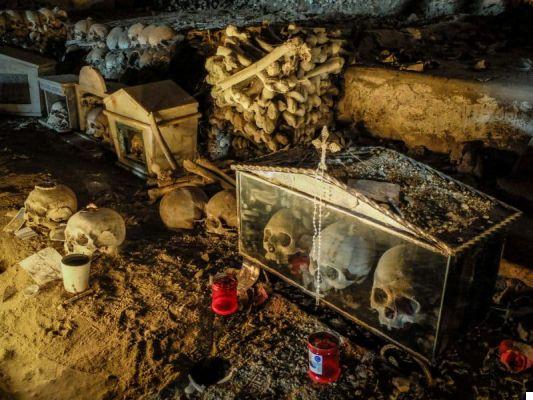
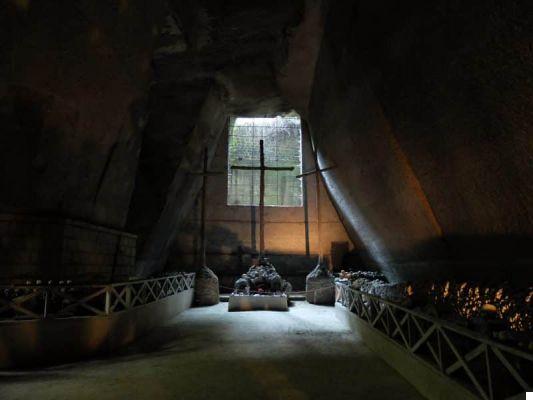
5.Pausylipon and the Vergiliano Park
I had found a flyer on the Pausylipon archaeological park in the b & b where I was staying several years ago and I was intrigued, but what I saw while visiting it was even more surprising! In the Naples guides there is no trace of this place and I do not understand how it is possible !! It can only be visited with a guided tour (here you will find all the info to book) and it is far from the center, beyond Marechiaro (the taxi is the best way to reach it), but it is absolutely worth it! You enter the Grotta di Seiano in via Coroglio and, after passing the cave, you arrive at the Archaeological Park where you can admire what remains of the luxurious villa of Pollione which extends from the promontory that dominates the splendid bay of Trentaremi to the sea. There is a practically intact theater and other structures that were part of the villa, but above all a belvedere from which you can admire the sea, and the Islets of Gaiola and the Scoglio di Virgilio. Returning to the center, stop and visit the Parco Vergeliano, where there is one of the longest Roman tunnels in the world (which connected Naples to Pozzuoli) and the tombs of two more than illustrious personalities: the poet Virgilio (who died in Brindisi, but whose remains were later brought to Naples) and no less than Giacomo Leopardi!
6.Villa Doria D'Angri
Villa Doria d'Angri is one of the most important Italian neoclassical villas and is located on a spur of the Posillipo hill. It was built in 1833 at the behest of Prince Marcantonio Doria d'Angri, the last exponent of the family, as a place of entertainment and prestige. The property extended along the crest of the hill and reached the beach of Mergellina with terraced vineyards and fruit trees (it still includes a park of 18,000 square meters!). The interior spaces are decorated with Pompeian motifs, and all the rooms are full of mirrors, majolica and stuccoes; the monumental structure also includes a valuable one Chinese pagoda octagonal. The view from its terraces and gardens literally takes your breath away! In 1880 Villa Doria d'Angri hosted Richard Wagner for several months and it is here that he completed the "Parsifal" and wrote the autobiographical book "My Life". The villa has been part of the Parthenope University of Naples since 1998, and can be visited freely on Mondays and Fridays at 10 am, or as part of the Maggio dei Monumenti di Napoli or in the days of the FAI. The villa is located in Via Francesco Petrarca 80.
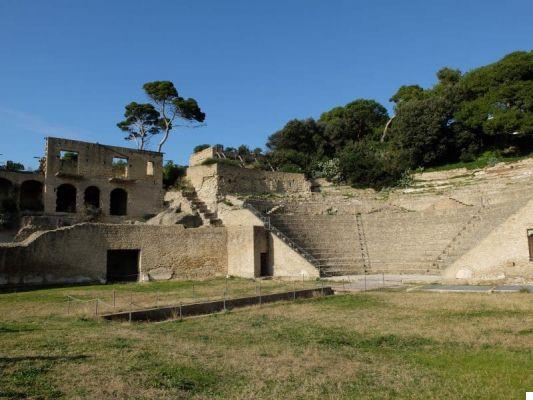
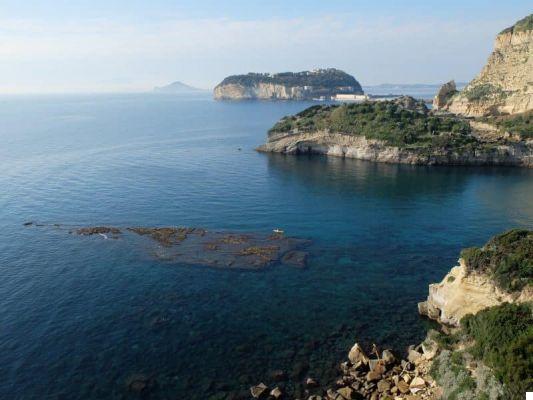
7. Pharmacy of the Incurable
Among the places of an unusual Naples I could not fail to mention Pharmacy of the Incurable. Annexed to the Renaissance hospital of Holy House of the Incurables, located a few steps from Spaccanapoli, the Pharmacy is a real baroque jewel. The greatest Baroque architects of Naples (the same of the Royal Palace of Caserta) worked on its realization and it is a magnificent apothecary that tells the history of medicine and pharmacology. Inside the Pharmacy of the Incurables you can see precious vases and urns that contained ancient spices and medicines, including the legendary theriaca, a mixture containing, among other things, opium, meat and viper skin that was considered the panacea for all ills. . There is also the Museum of Health Arts with a disturbing collection of ancient surgical instruments and the beautiful Medical Garden (called Orto de'Semplici), a magnificent garden of medicinal plants and herbs. The Pharmacy of the Incurables can be visited on Wednesdays, Fridays and Saturdays from 9.00 to 17.00. Guided tours of about an hour and a half are organized, with which you can also visit the Museum of Health Arts and History of Medicine, the Garden and the Cloister of Santa Maria delle Grazie in the Hospital of the Incurables. Reservation is required by calling 081440647, or by writing to the email address: [email protected] required contribution is 10,00 euros per person.
8. The Petraio and the Pedamentina di San Martino
Having been built on several hills, Naples is full of stairs and stairways and there are two that I am particularly fond of and that absolutely must do: the so-called Petraio and the Pedamentina di San Martino. The Petraio connects Castel Sant'Elmo with Chiaia; starts from via Annibale Caccavello, just behind the Montesanto funicular station. Originally it was an alluvial bed of the Vomero and a village was then built around it with Neapolitan Liberty buildings built in the early twentieth century (such as Villa Ascarelli, Villa Pansini and Villa Mellucci). In addition to the beauty of the houses that meet, going down you will have magnificent views of the gulf. The Pedamentina of San Martino descends impervious from the square in front of the Certosa di San Martino and arrives, with 440 steps, up to Spaccanapoli. The staircase was built starting from the fourteenth century and crosses vegetable gardens and other green spaces that once belonged to the Certosa. Even from here the views over the sea are magnificent. Walking these stairways, especially towards sunset, always gives me a lot of peace.
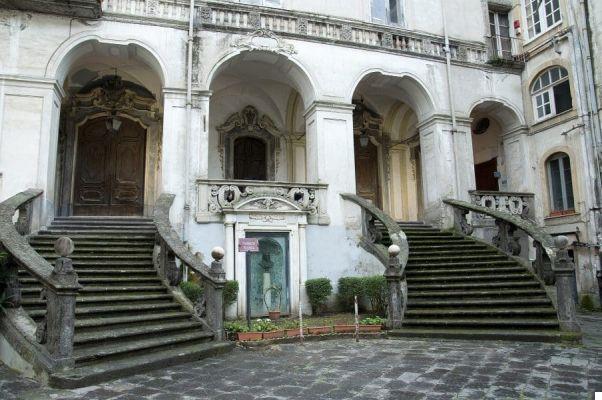
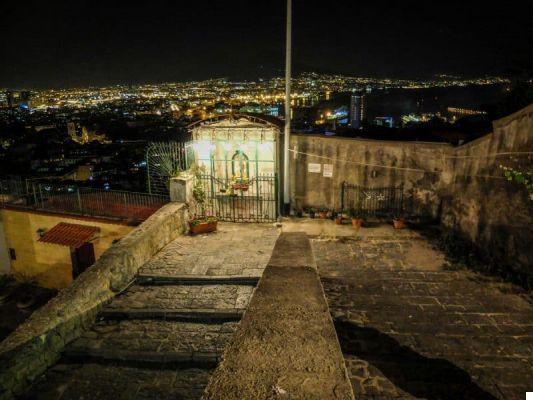
9.The underground art
With the term Underground art in Naples reference is made to several metro stops (mainly along Line 1) that have been designed and decorated by internationally renowned artists with Kounellis, Karim Rashid, William Kentridge, Bob Wilson and many others. Among the most spectacular there are certainly the Toledo station (which with its mosaics and its lights recalls the sea and the abyss), the Materdei station (with a Fiat 500 installation), the Museum station (with many snapshots taken by famous Italian photographers) and the Dante station (with the installation made of shoes and other personal items by Kounellis). It should be noted that the Toledo station has repeatedly won the title of "most beautiful metro station in Europe" .. not cocks! By buying an ordinary metro ticket for 1,5 euros, you have the opportunity to visit an underground contemporary art museum.
10.Palazzo San Teodoro
If you are passionate about historic buildings like me, you cannot miss this little gem among the unusual places of Naples, that is Palazzo San Teodoro, a kind of miniature palace overlooking the Riviera di Chiaia. The furniture and furnishings still retain the magnificence of the craftsmen who served the Bourbons. The most impressive room is the large one Ballroom with mirrors, stuccoes and large frescoes. Also noteworthy is the Gallery with large windows, gilt bronze and crystal chandeliers, as well as the other halls whose ceilings are frescoed with subjects of Hellenistic and Herculaneum inspiration (including the Hall of Mirrors and the dining room). The guided tour of the palace is a mix between the real and the virtual; thanks to two apps and a visor, visitors can immerse themselves in a virtual reality and travel through time and history. Visits can only be made by booking the toll-free number 800 911 115 or through the website. The proceeds are intended for the maintenance and conservation of the house-museum. The total duration of the guided tour is approximately 50 minutes.
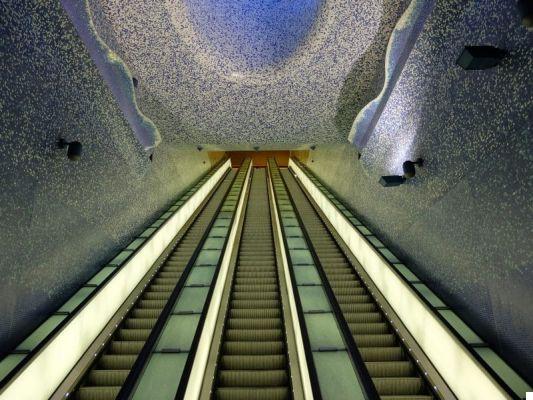
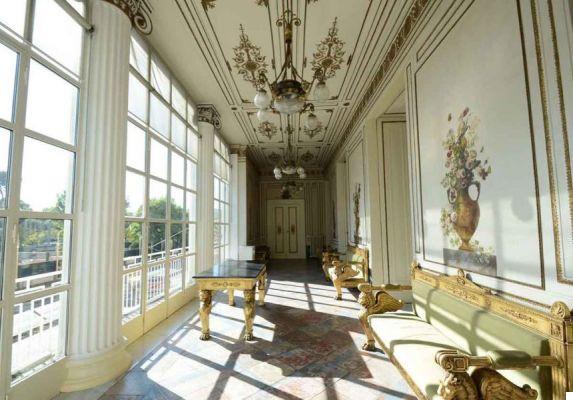
You might also be interested in these other articles I wrote about Naples and Campania:
- What to see on the Amalfi Coast in 3 or 5 days
- What to see around Naples: 7 trips out of town not to be missed
- Where to eat in Naples, the best pizzerias and pastry shops
- What to see in Naples in 3 days
- Excavations of Pompeii: guide to the visit
- 10 beautiful farmhouses with swimming pool in Campania




